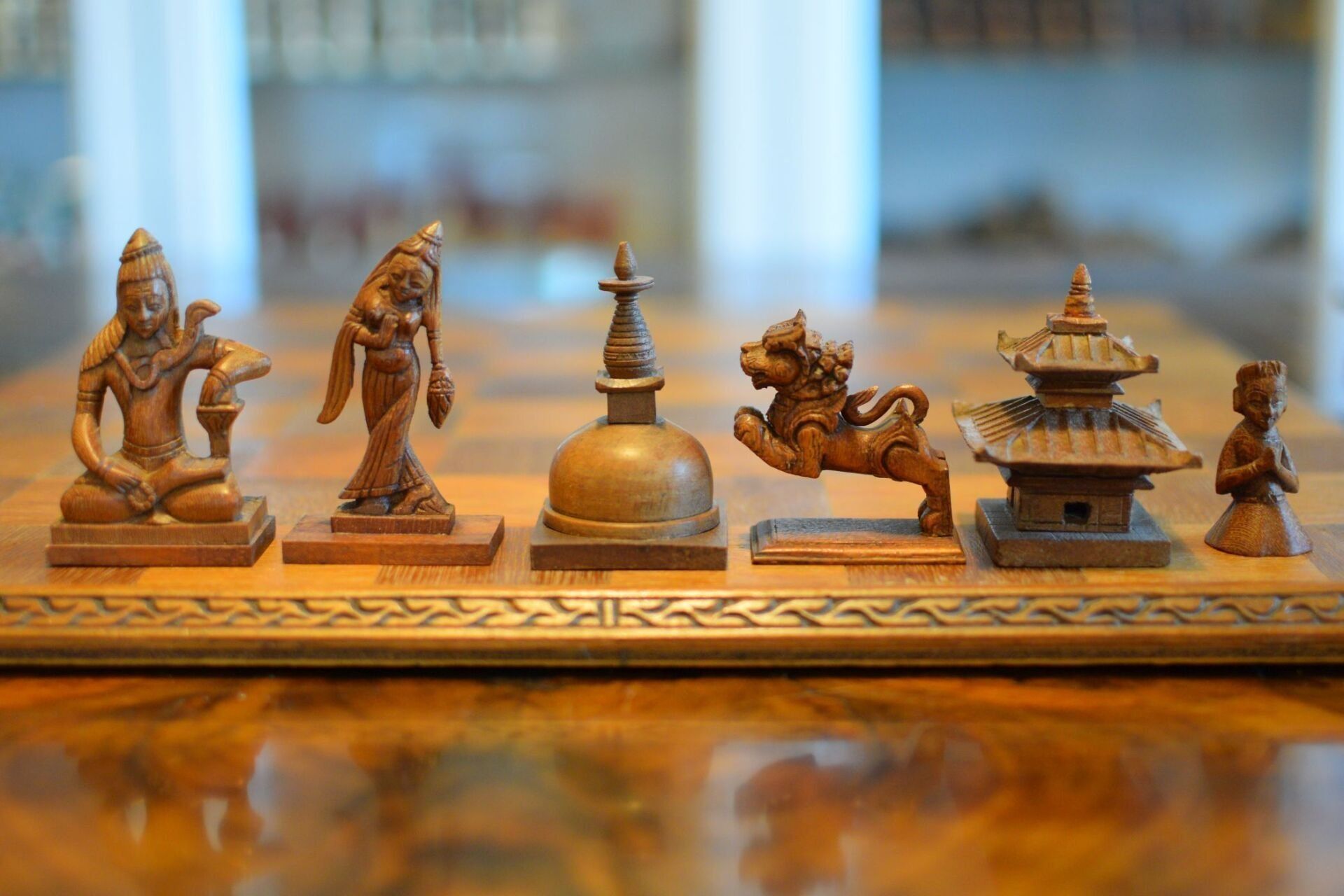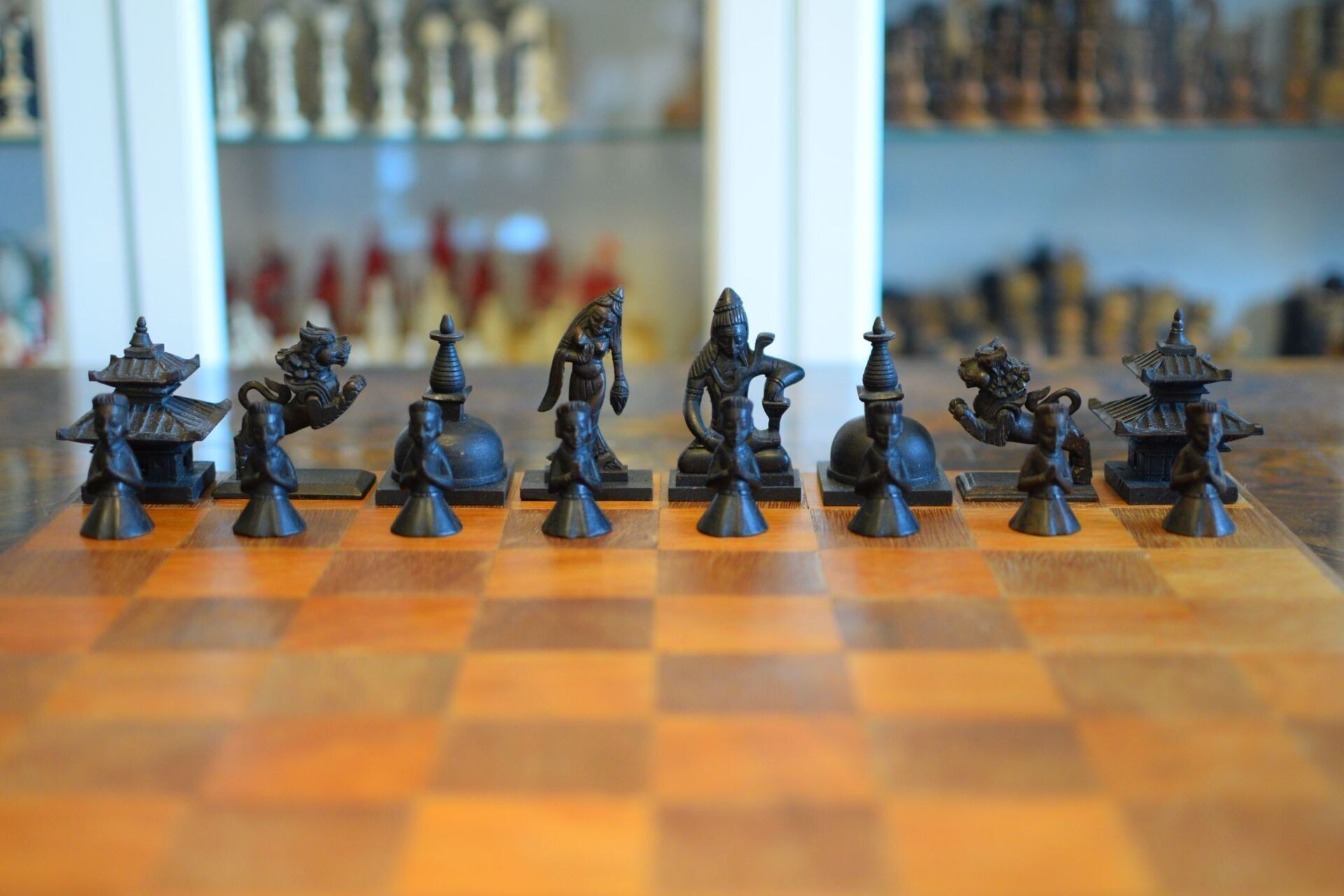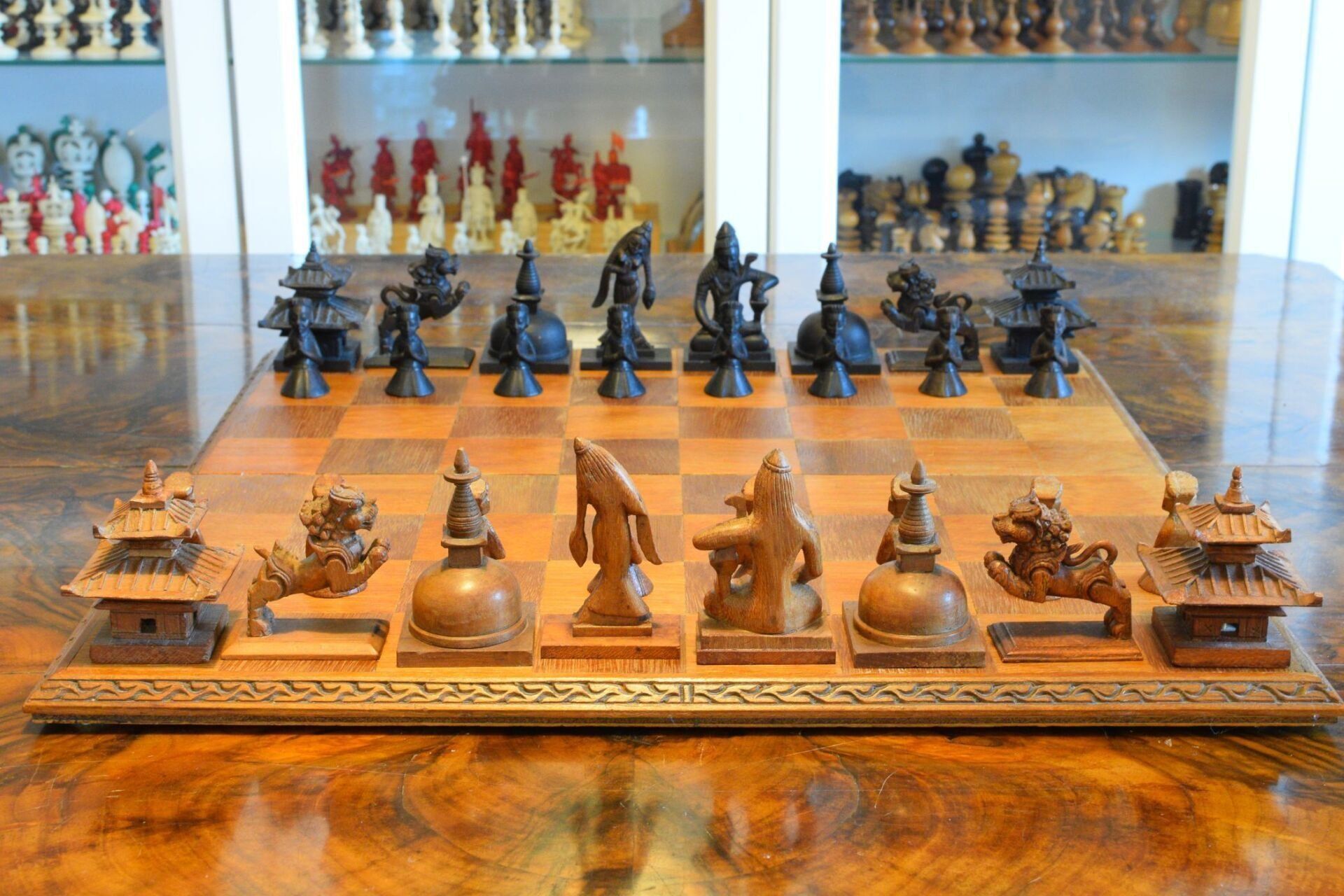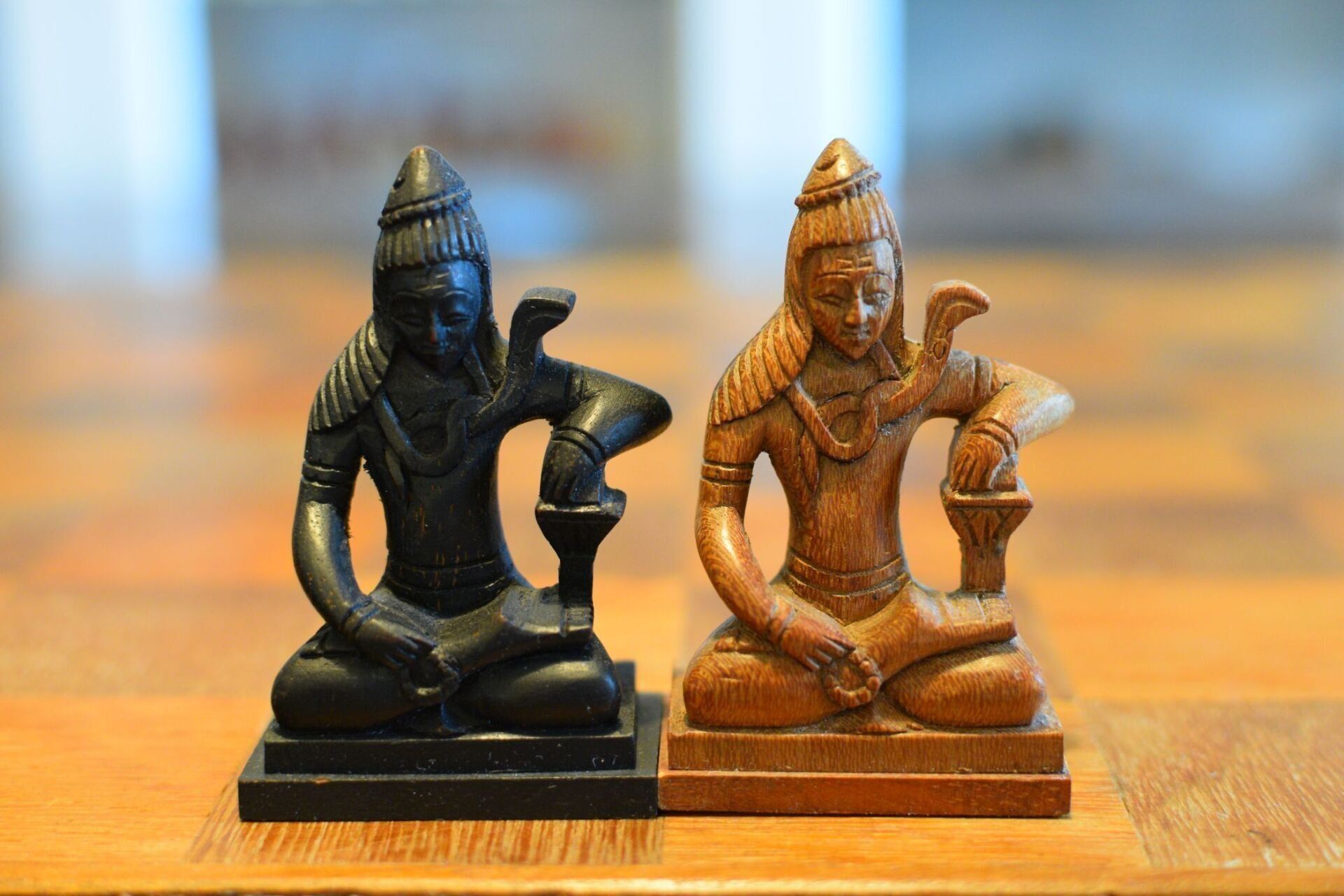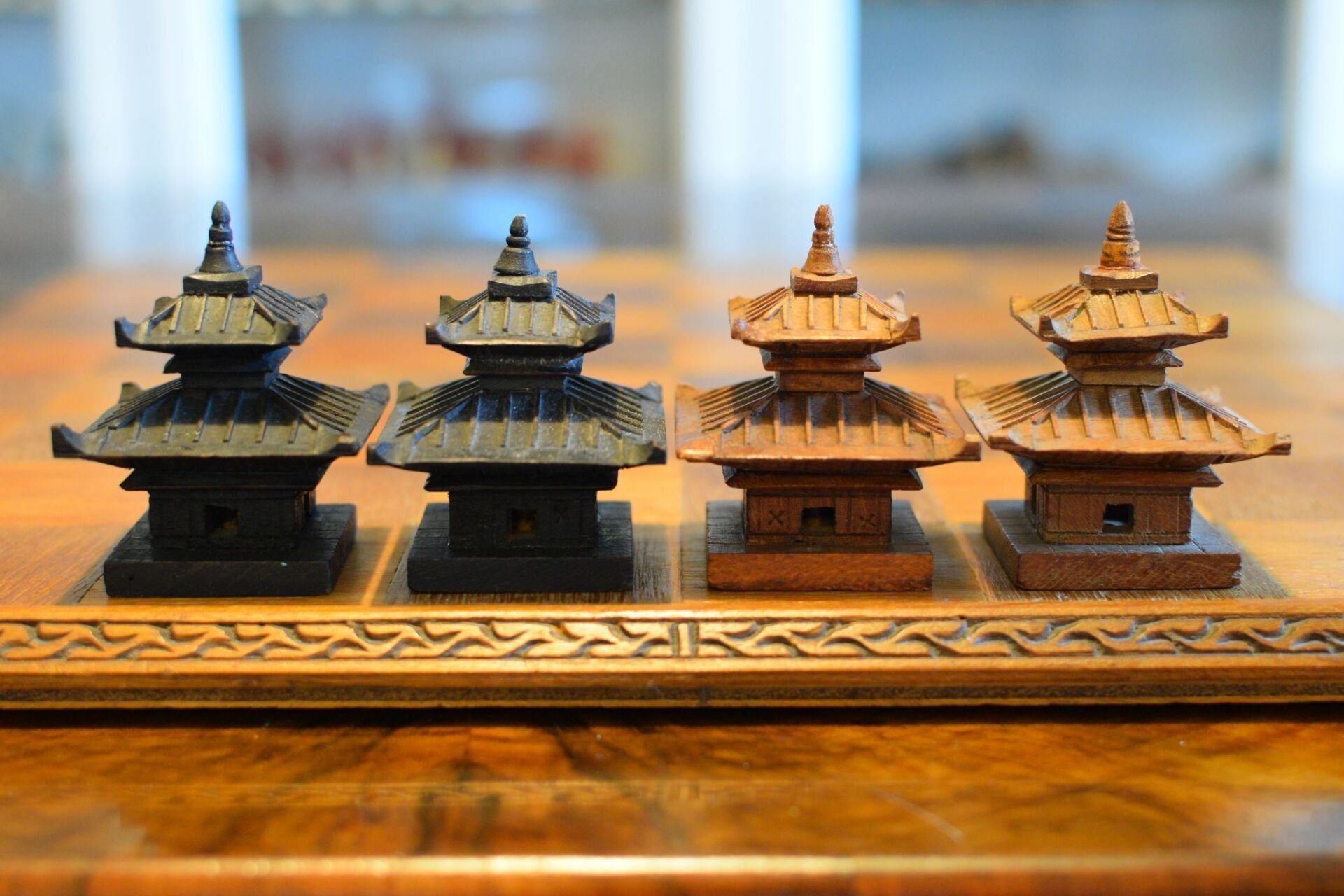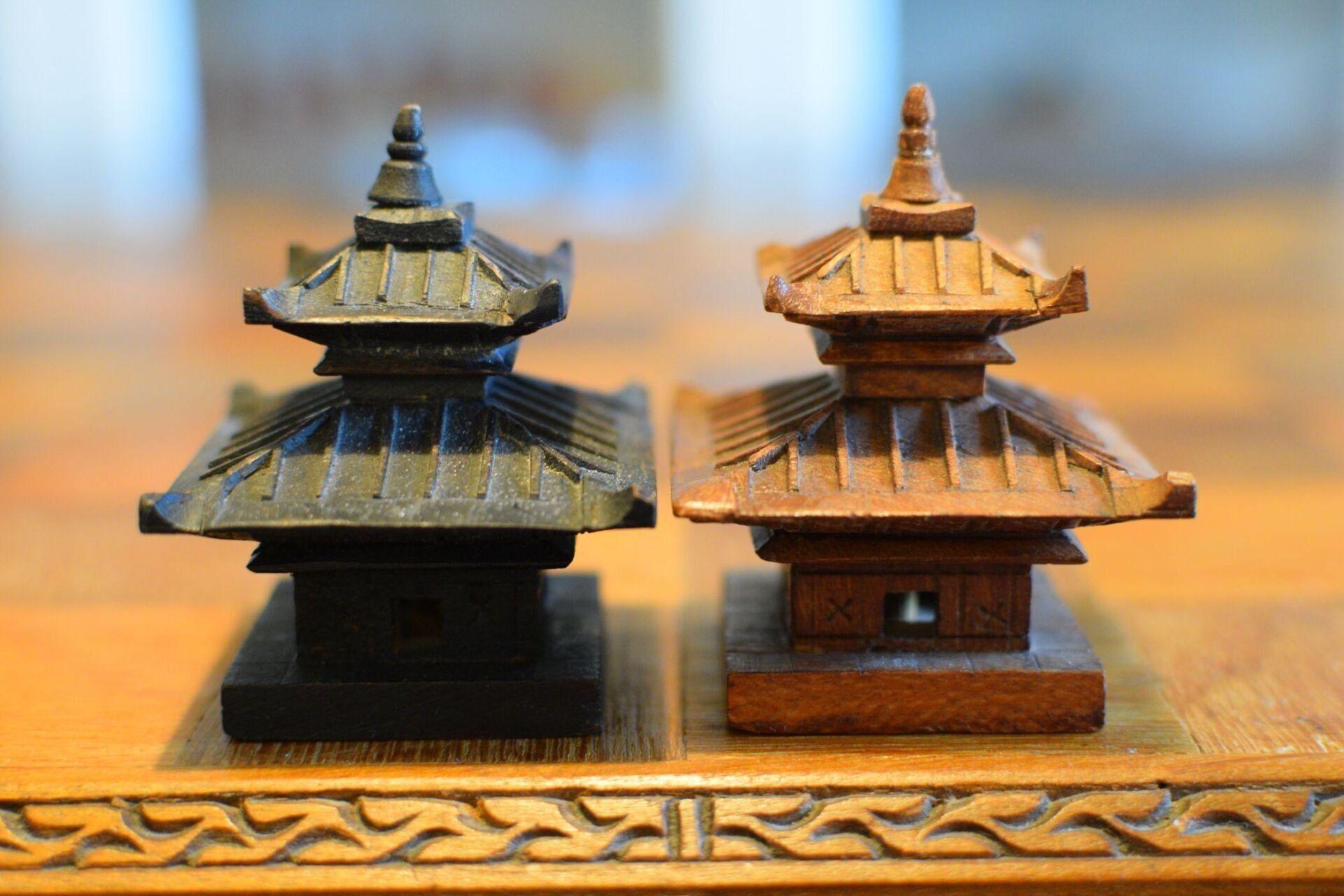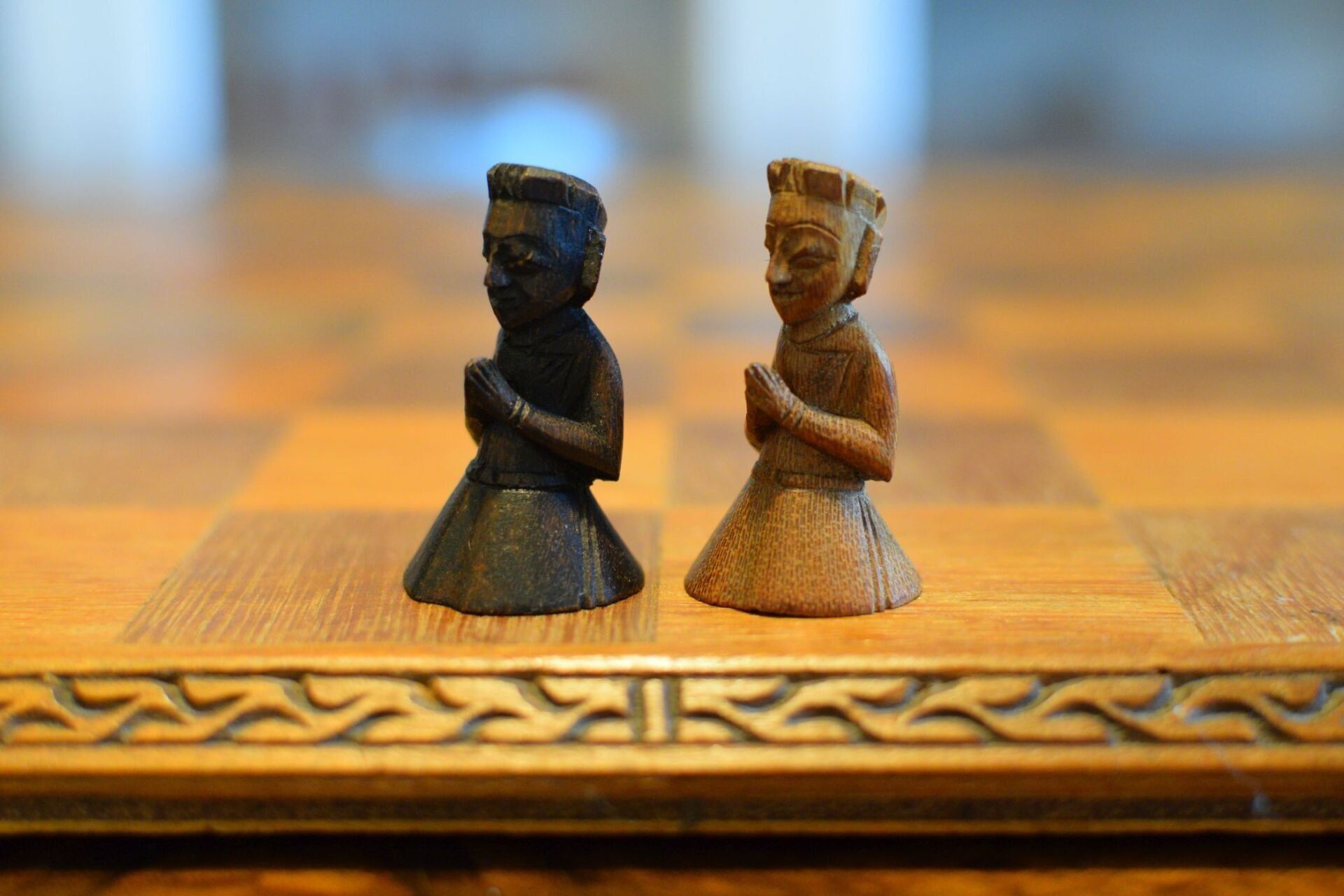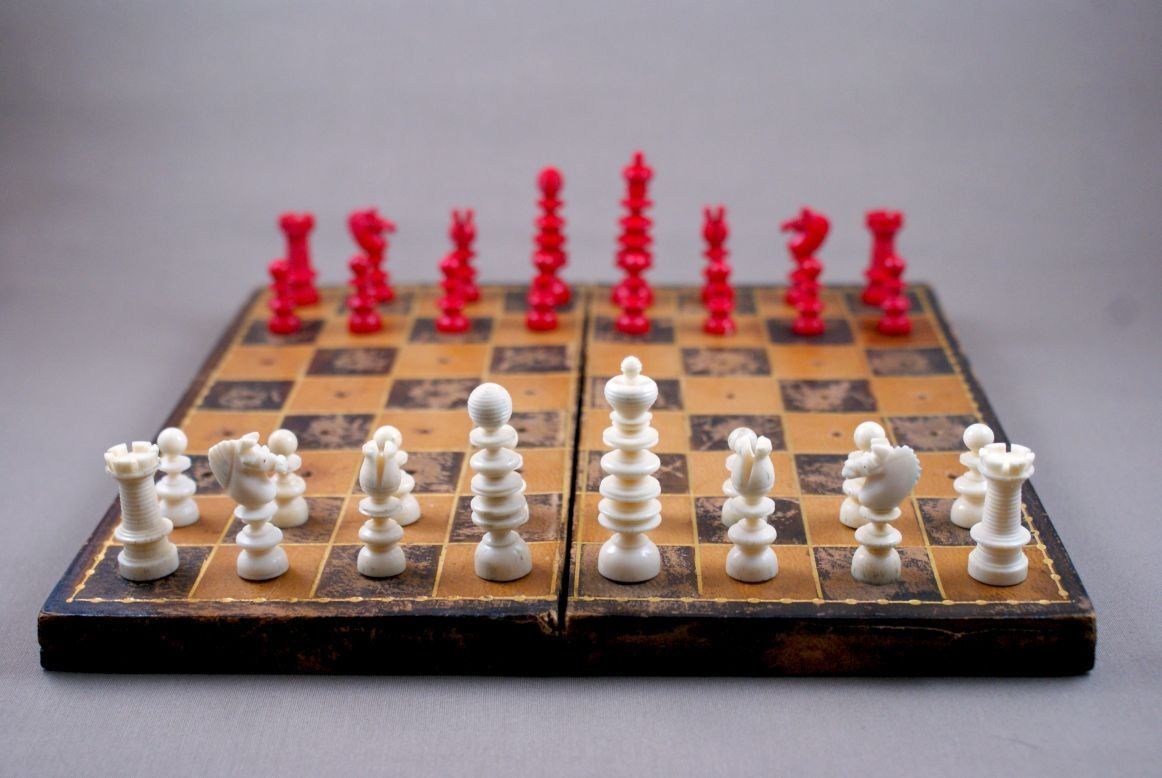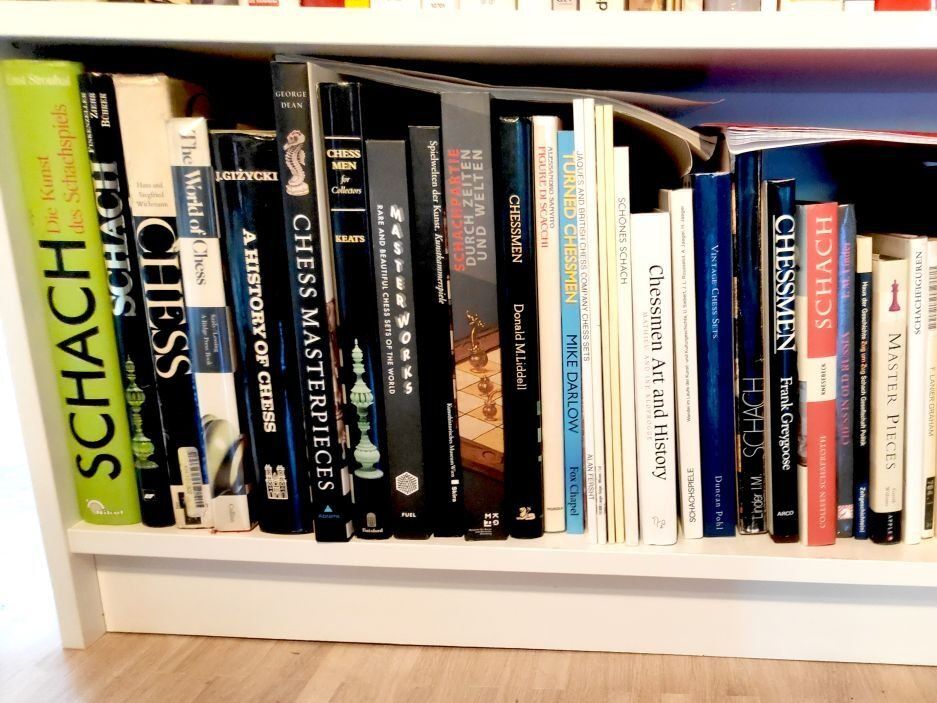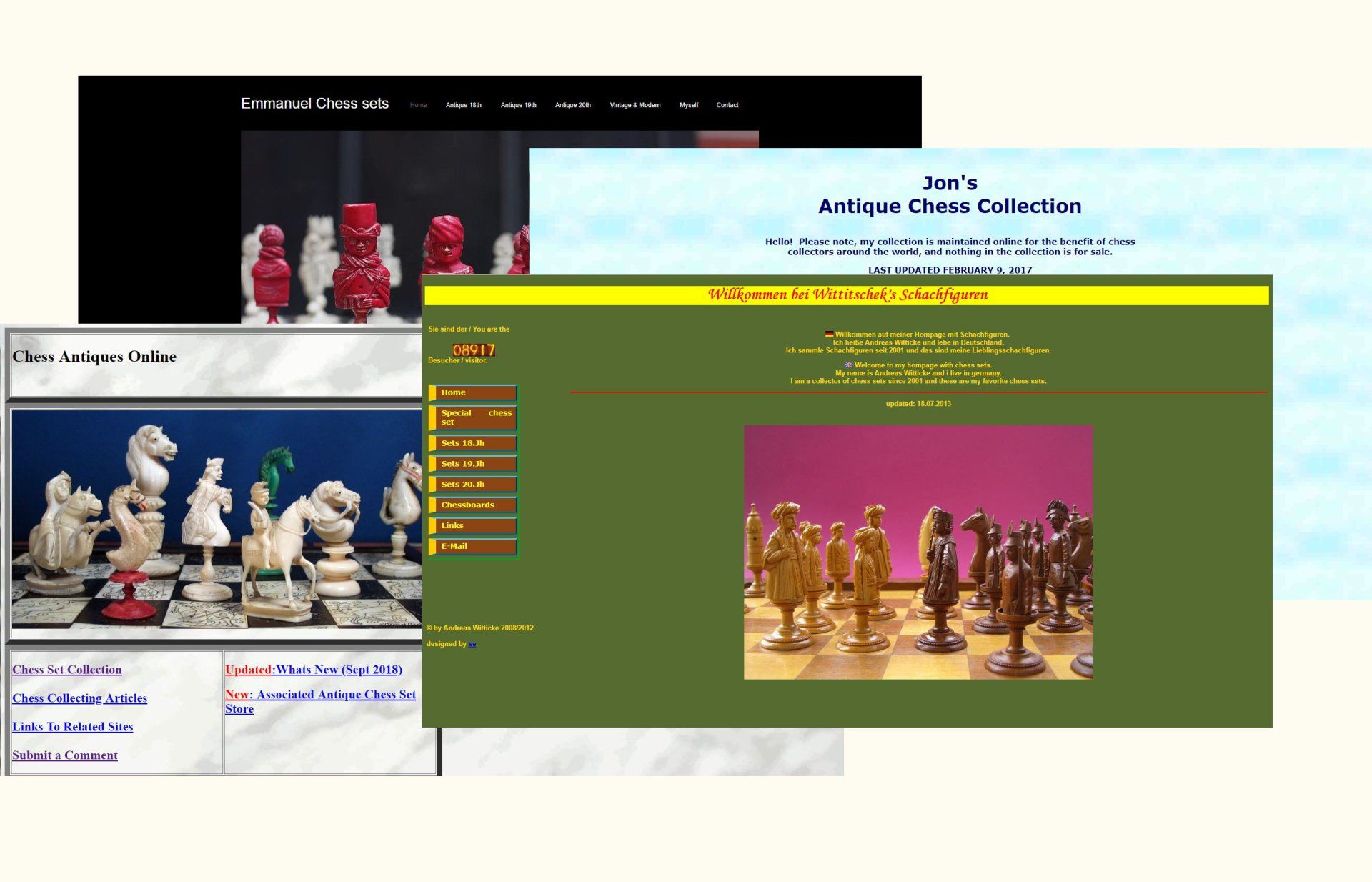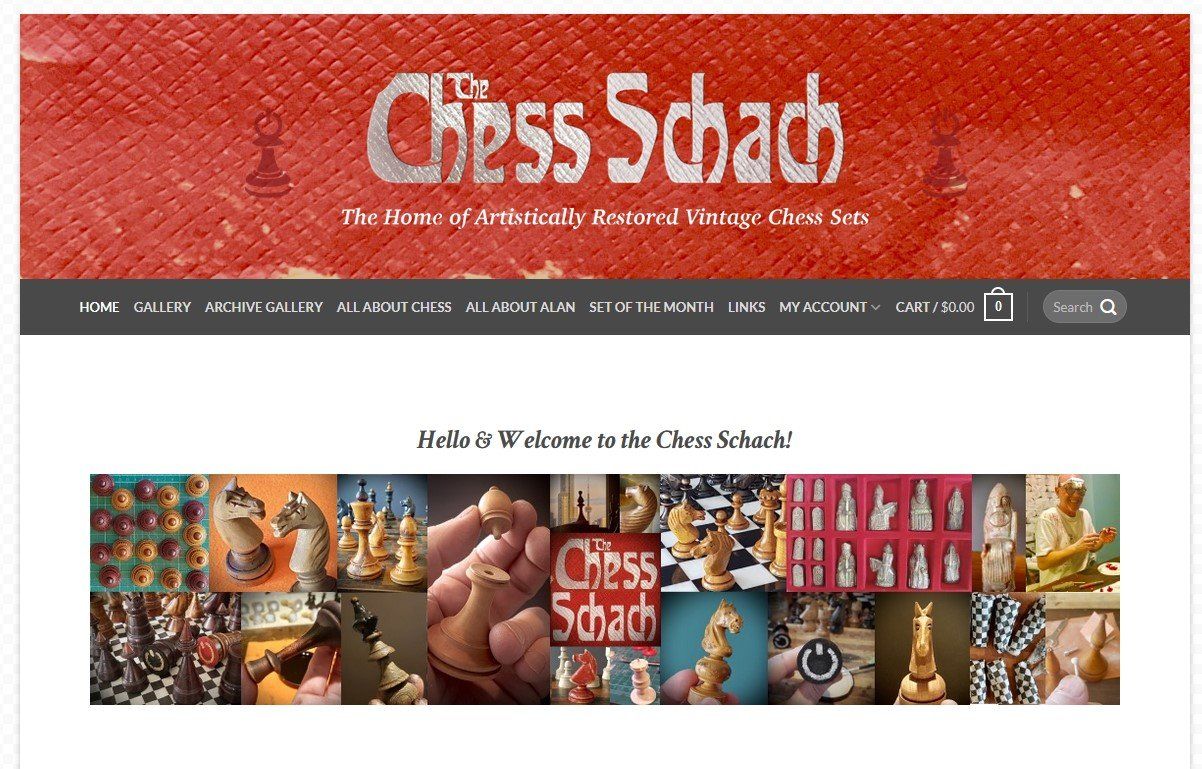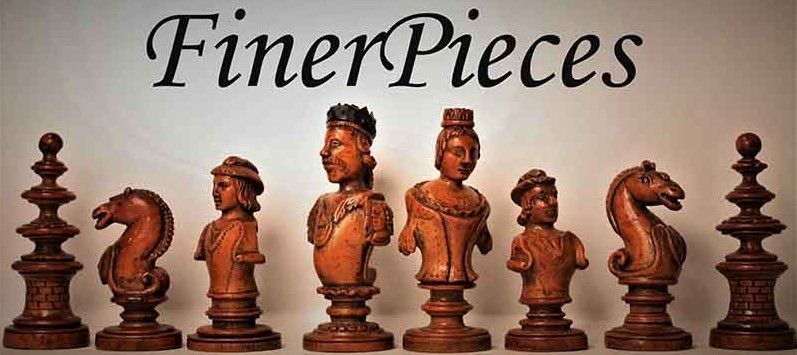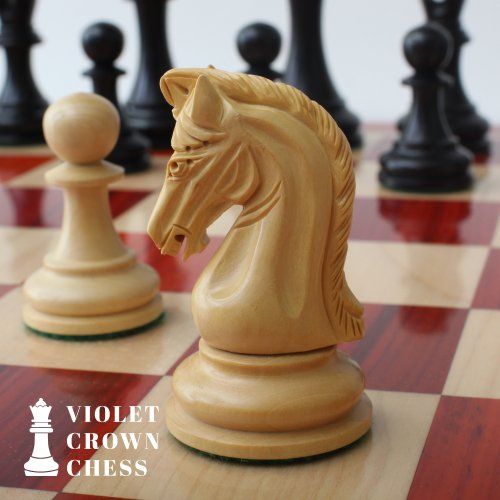Nepalese Figural Chess Set, ca. 1920-1950
Here is an interesting figural chess set with Asian motifs. The same type of set is shown in Ned Munger's Cultures, Chess & Art - Vol. 3 Pacific Islands & Asia in fig. 75. He attributes this chess set to Cambodia, because the queen in the set is shown as a female dancer, which Ned Munger identifies as an "apsara", a classical female dancer in the Cambodian mythology. I am afraid that this is one of the very few examples, in which Ned Munger is wrong. The set is of Nepalese origin. The rooks and bishops are designed as temples, which show two of the main architectural styles of Nepalese temples. The bishops are temples in the Stupa style, characterised by a typical hemispherical dome shape with a pyramid-like structure on top and a square base. Believed to have been introduced by Emperor Ashoka in Nepal, this style is said to represent the five elements of Buddhism, namely, earth, water, fire, air and space. This one resembles the Stupa of Bodnath in the Kathmandu vicinity in particular. The rooks are temples in the Pagoda style and I believe they are meant to represent the Changu Narayan temple. I come to this conclusion for a specific reason, which is the design of the king. The king is depicted as a seated deity with a snake chain, which bears great resemblance to a statue of the praying Garuda with the snake god Takshaka, which is located in said Changu Narayan temple in the Kathmandu Valley. The queens, as already mentioned, are shown as female dancers, very much resembling Nepalese Maruni dancers, which are characterised by hats with long scarves attached to them. The knights are leaping Nepalese temple lions. The pawns are peasants kneeling in prayer.
Ned Munger reports that he bought the set shown in his book in London in 1951. Others have dated similar sets to 1890-1920, which may be a bit too old. I personally believe that the set shown here was made between 1920 and 1950. It comes with the original folding board, which is rather rare.
